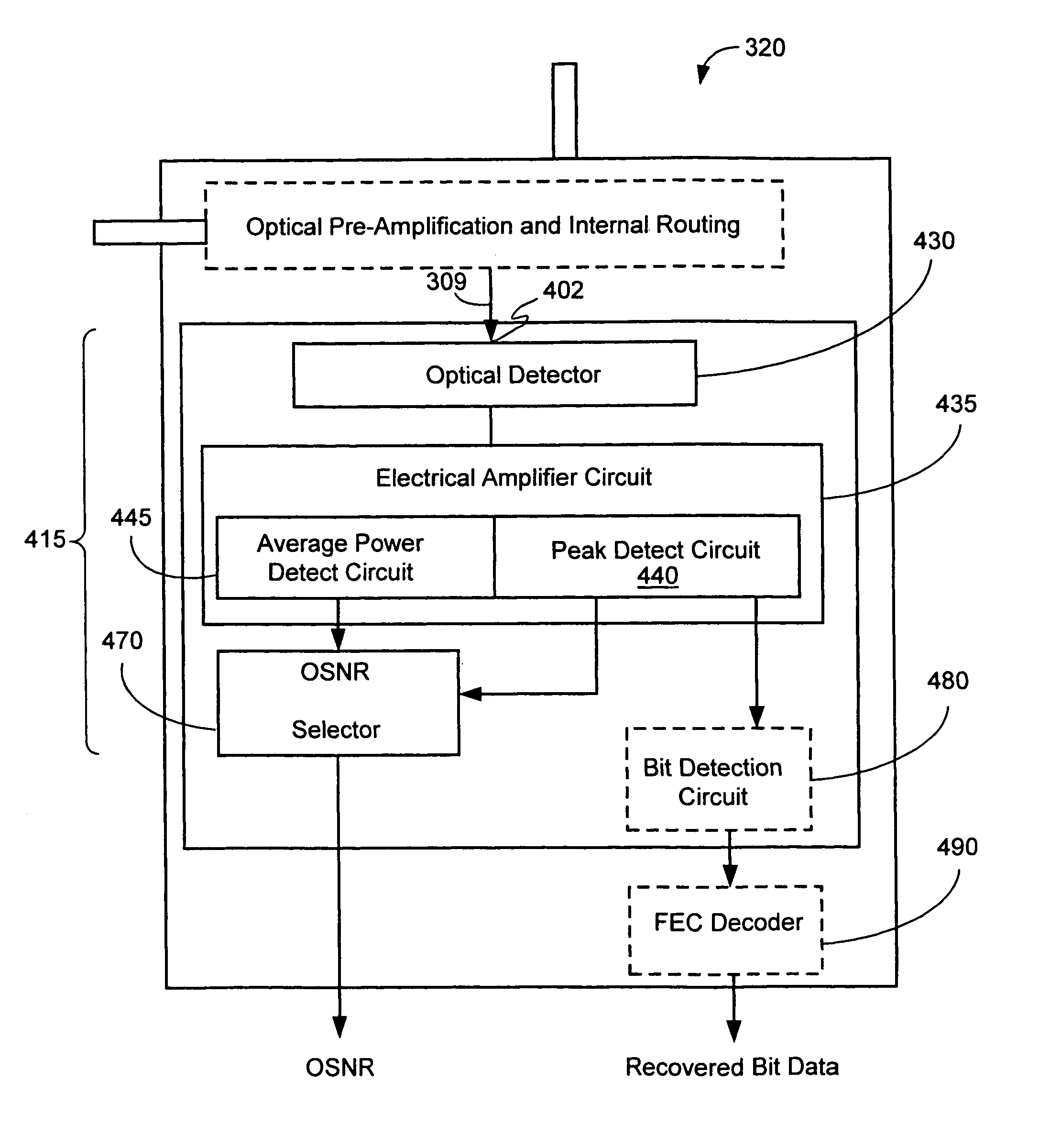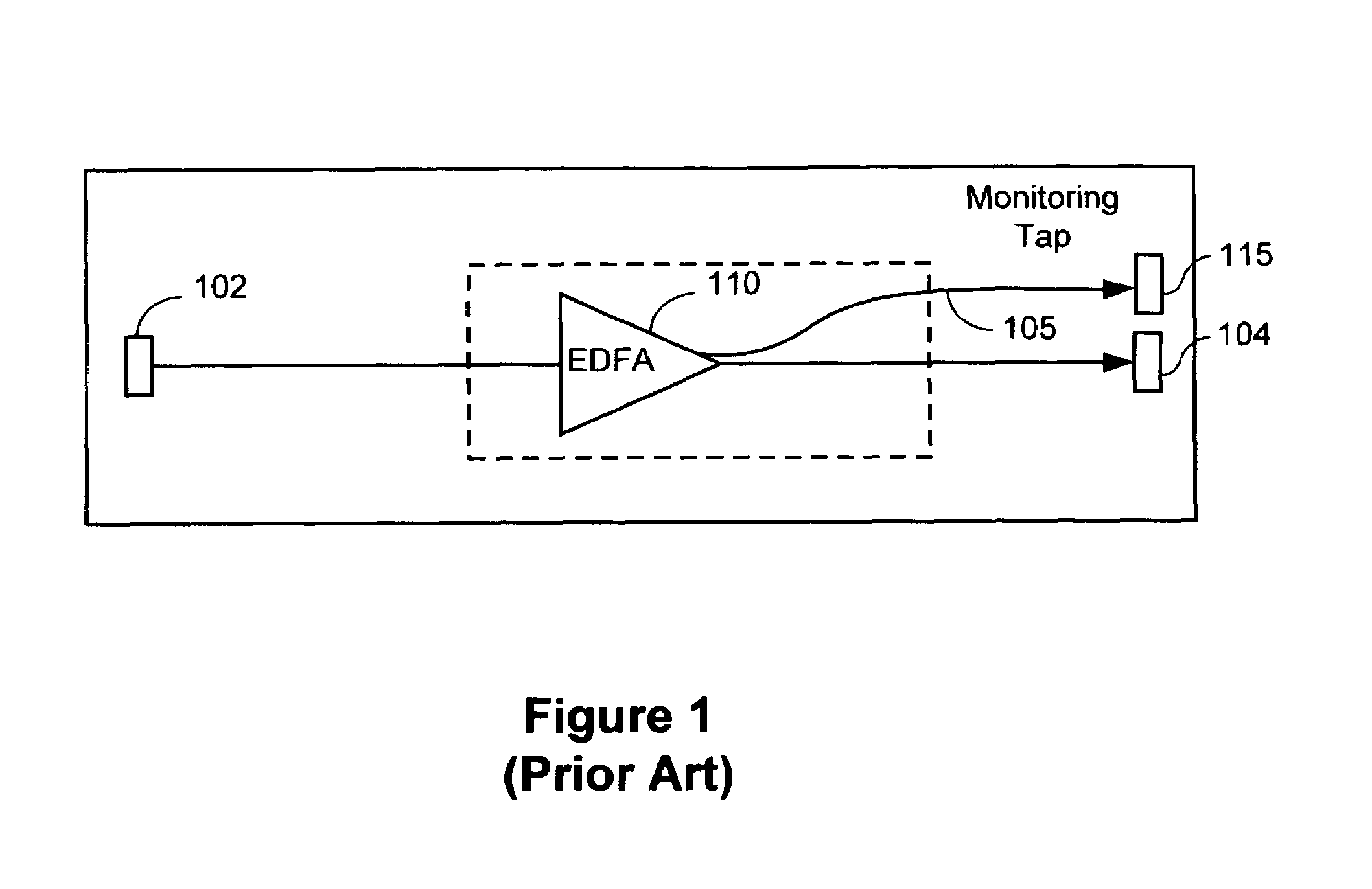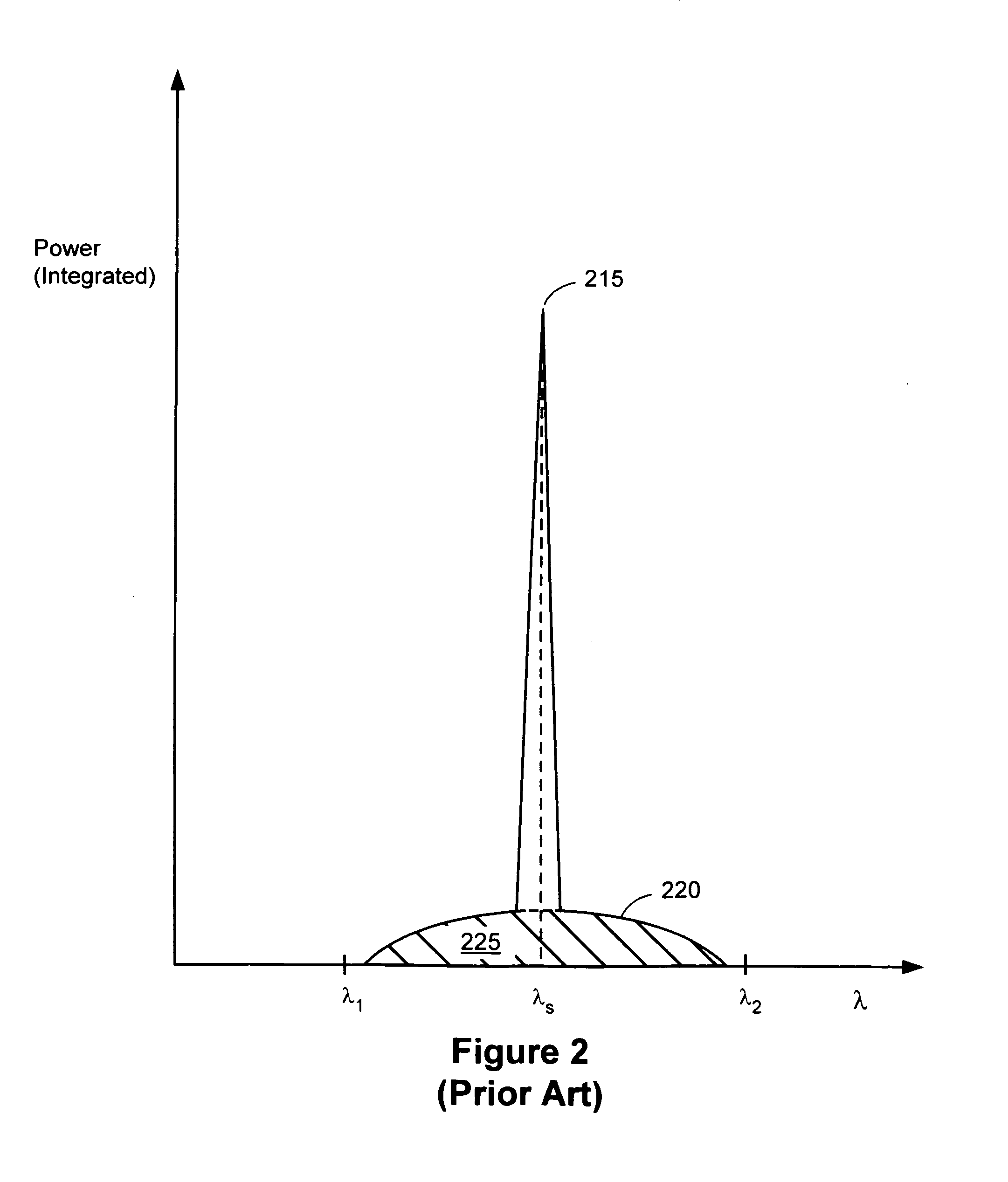System and method for monitoring OSNR in an optical network
a technology of optical signal tonoise ratio and optical network, which is applied in the direction of transmission monitoring, transmission monitoring/testing/fault-measurement system, electrical apparatus, etc., can solve the problems of prohibitively expensive dedicated multi-channel optical spectrum analyzer capable of simultaneously monitoring every channel in a node, and inability to achieve the desired resolution
- Summary
- Abstract
- Description
- Claims
- Application Information
AI Technical Summary
Benefits of technology
Problems solved by technology
Method used
Image
Examples
Embodiment Construction
[0029]The present invention generally includes an apparatus, system, and method for measuring the optical signal to noise ratio (OSNR) at selected locations of an optical network, such as in selected node locations of a dense wavelength division multiplexed (DWDM) network. As described below in more detail, the capability to measure OSNR in service may be applied in the optical network to facilitate making switching, routing, or network configuration decisions to maintain the quality of service (QOS).
[0030]In an optical network, the OSNR of a particular signal depends upon the optical path that the optical signal traverses in the optical network. FIG. 3A is a block diagram illustrating an optical network 300 in which it is desired to transmit data from a first point 301 in a first node 305 to second point 309 in a second node 320 along an optical path. By way of example and not of limitation, point 301 may be a transmitter in first node 305 transmitting a signal on a wavelength chan...
PUM
 Login to View More
Login to View More Abstract
Description
Claims
Application Information
 Login to View More
Login to View More - R&D
- Intellectual Property
- Life Sciences
- Materials
- Tech Scout
- Unparalleled Data Quality
- Higher Quality Content
- 60% Fewer Hallucinations
Browse by: Latest US Patents, China's latest patents, Technical Efficacy Thesaurus, Application Domain, Technology Topic, Popular Technical Reports.
© 2025 PatSnap. All rights reserved.Legal|Privacy policy|Modern Slavery Act Transparency Statement|Sitemap|About US| Contact US: help@patsnap.com



